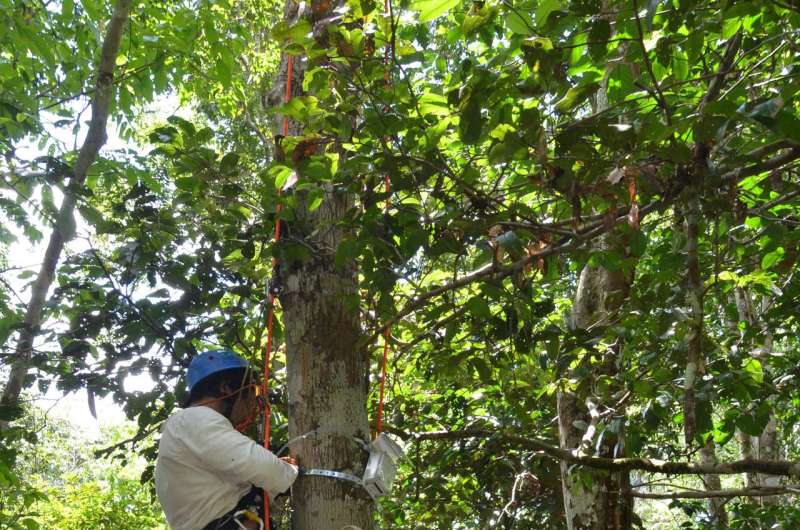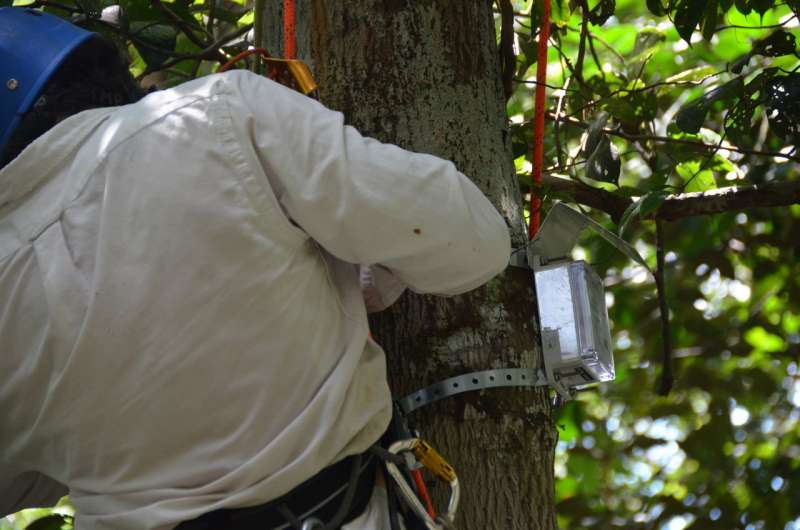Credit: Delft University of Technology
Radar technology in space can be used to measure how 'thirsty' plants and crops are. This could play a key role in improving our understanding of how ecosystems and the water and carbon cycles interrelate. In theory, we have the technology to monitor crops on a global scale and identify where remedial action is needed. On Friday 1 December, Tim van Emmerik will be awarded his PhD at TU Delft for his work on the subject.
Van Emmerik conducted research into precipitation, evaporation and ways of measuring plants' thirst. His main focus was on the tropical rainforests. This is because they have an essential role to play in the Earth's water, oxygen and carbon cycles. "If the Amazonian rainforest becomes increasingly drier, or is reduced in size because of deforestation, this will have an impact on the water and carbon cycles. That could contribute to climate change on Earth," explains van Emmerik.
A practical problem encountered in the research was that the measurement instruments are expensive or can damage trees. They also cannot endure the extreme conditions of a rainforest. "As soon as you start hanging boxes of equipment in an ancient forest, snakes, spiders and other creatures start to live in them. One potential alternative is to take measurements from the air using satellites or radar. But the only way of knowing if your measurements are accurate is to check what exactly is happening on the ground."
With the surge in the growth in the smartphone industry, sensors have become much cheaper and more robust. Together with his colleague Rolf Hut, Van Emmerik therefore came up with the idea of using accelerometers as an affordable alternative for measuring tree movements over a longer period. By linking the speed of movement of a tree to other meteorological and hydrological data, he was able to relate the tree movements to external pressures (such as wind, evaporation and rainfall) and distinguish these from the physical characteristics of the tree itself (such as elasticity, mass and water content).
Credit: Delft University of Technology
Van Emmerik investigated all of this step-by-step in tomato plants, in corn fields and in Brazil.
In order to investigate the impact of water stress in tropical rainforests, accelerometers were installed on 19 trees in the Brazilian Amazon to measure their movement. The way in which trees move depends on various characteristics. Van Emmerik shows that the movement is affected by the tree mass, the amount of water that remains on the leaf canopy and how much the tree interacts with the atmosphere. The data also revealed a clear difference between the rainy and dry seasons.
It is assumed that this change is a result of changes in tree mass, caused by fluctuating water content or the loss of leaves because of an increasing water deficit. "I used field data of water deficit in trees combined with radar observations to show that radar reflection is extremely sensitive to increasing water stress. During the transition from the rainy into the dry season, a clear reduction in regular reflection was identified, which can be explained by the rapid increase in water deficit measured in the trees."
"The sensitivity of radar reflection to water stress in vegetation has been the subject of discussion for years. Unfortunately, there were insufficient observations to test the theory until now. I have demonstrated that water deficit in vegetation causes significant changes in water content and the conductivity of plants, which in turn results in observable differences in radar reflection."
Provided by Delft University of Technology

























